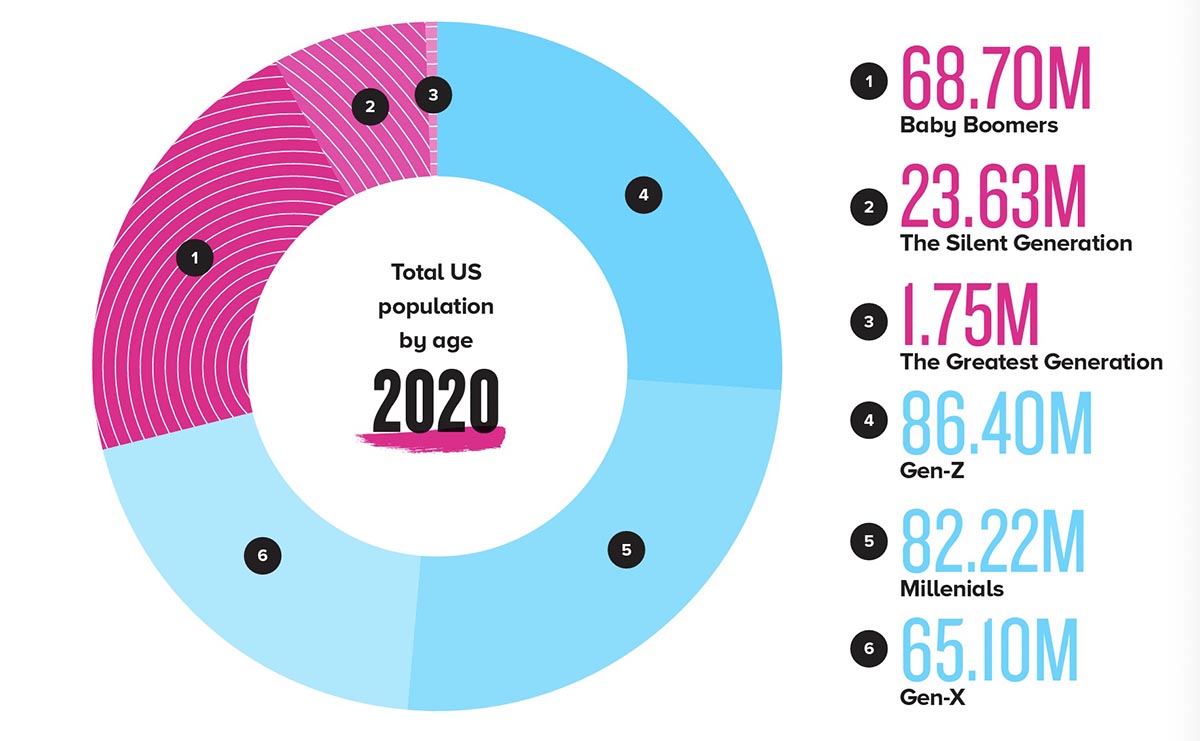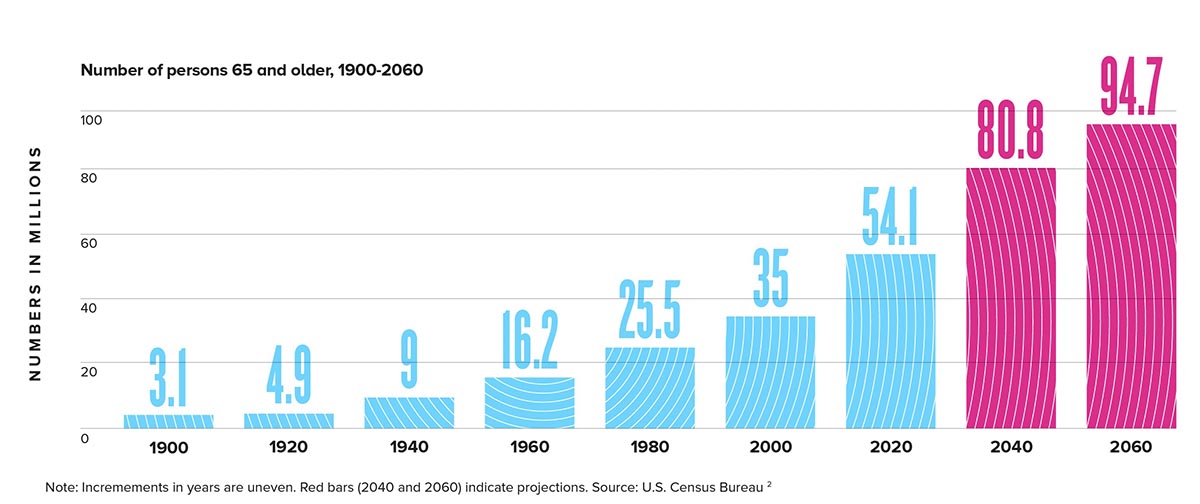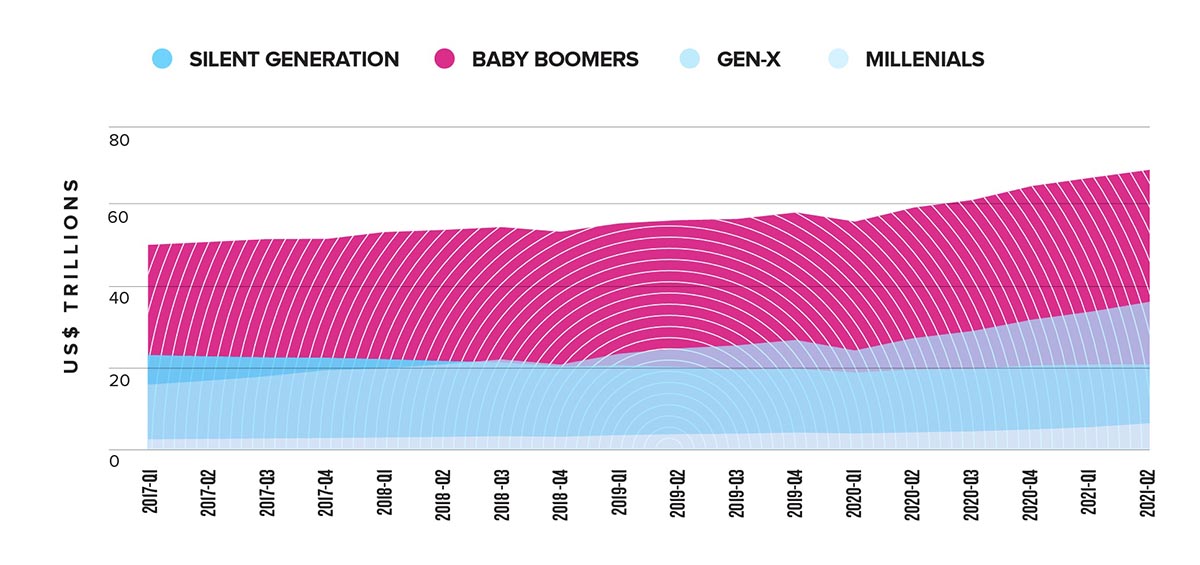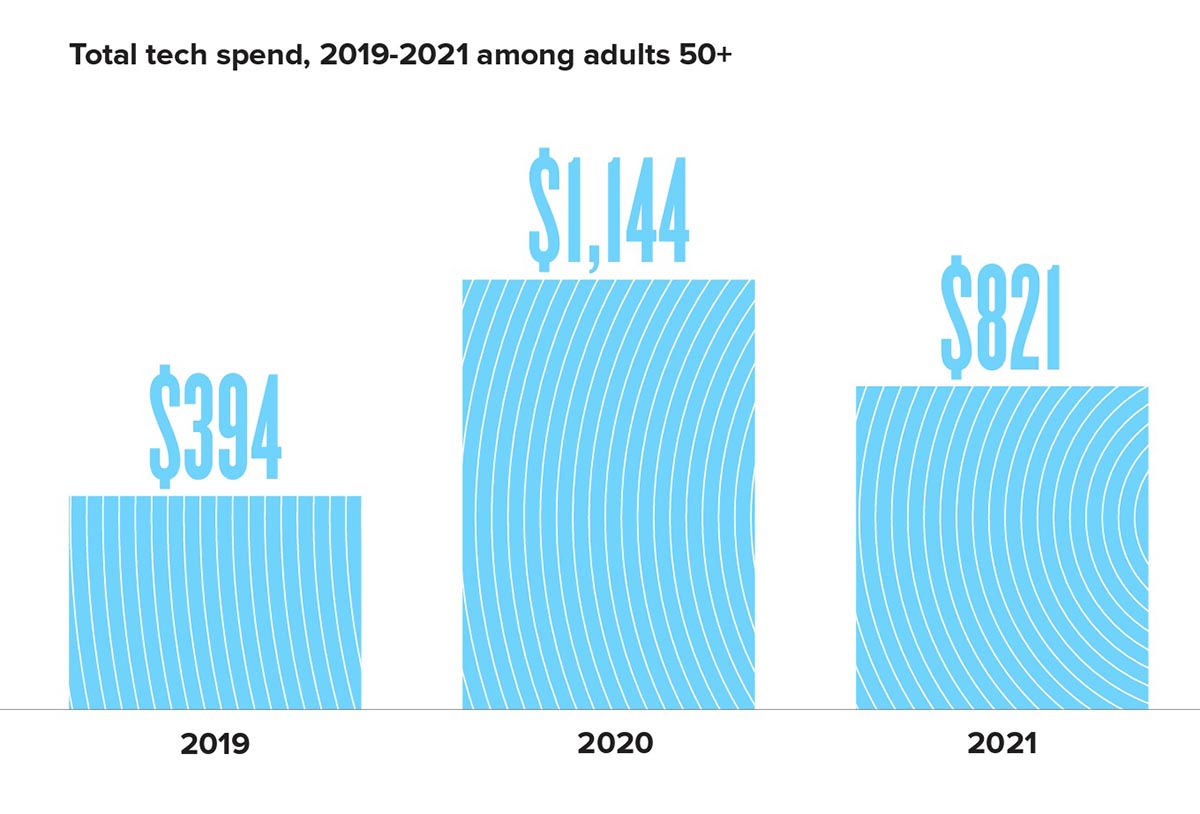Two reports from Alive Ventures, “Growing Older Better: Insights and Opportunities” and “State of the Market 2022,” place a spotlight on a surprising oversight: the U.S. market with the largest accumulated wealth in the country is being overlooked, or perhaps even taken for granted, by marketers. When we watch television commercials, browse through magazine ads, and glaze over online ads, what we see are beautiful people doing exciting and adventurous things. Sometimes those beautiful people are older adults, but rarely. Yet this demographic represents high profit opportunities for marketers if they aren’t already taking advantage of them.
Alive Ventures defines “older adults” as spanning baby boomers, the silent generation, and the greatest generation, a total of 100 million people. When we look at those specifically 65 and older, this demographic numbered 54 million in 2020 and is expected to nearly double by 95 million by 2060.

Source: Alive Ventures
While the median household income for these consumers is less than that of the population overall ($47,000 compared to $67,000), older Americans hold more than half of the nation’s wealth. This isn’t simply an age thing. Alive Ventures quotes data from CNBC that baby boomers had more wealth when they were the same age as millennials today, and the pandemic has only widened the generational gap. This demographic also represents more than half of the nation’s spending.

Source: Alive Ventures
Let’s not be fooled by the lower annual household income, either. Older Americans don’t have the same expenses as younger ones. Their children are out of the home, their mortgages are often paid off, and they have proportionally more disposable income. Citing Epsilon, Alive Ventures points out that older adults also spend similar amounts (if not more) on non-essentials than their younger counterparts. This includes on things we stereotypically might not expect. For example, estimates indicate that those ages 50+ will spend upward of $84 billion on tech products by 2030. Per capita, this spending is expected to more than double from $394 to $821 between 2019–2021. What are these consumers buying? Smartphones, smart TVs, and Bluetooth headsets/earbuds. They are not just buying tech, but online services. More than half (55%) have online video subscriptions, 27% use telehealth, 29% use video conferencing, and 22% use grocery delivery.

Source: Alive Ventures
So why are marketers under-representing this demographic? You’d think that older Americans would be well represented in marketers’ creative. After all, we’re doing more targeting and customization now, right? Target audiences want to see people who look like them. Yet, Alive Ventures notes that while 46% of the U.S. adult population is over age 50, only 15% of online images include adults 50+, and despite the fact that this demographic is spending a tremendous amount on technology, “a mere 5%” of images of people 50-plus are shown with technology. Furthermore, Alive Ventures cites data showing that portrayals of those 50+ are negative 28% of the time, “often depicting them in isolated situations or as the recipients of care, compared to negative imagery accounting for only 4% of younger people’s media depictions.”

Source: Alive Ventures
What’s the point? It’s that your clients may be overlooking a key opportunity in their marketing by neglecting to develop creative, messaging, and offers targeting this massive demographic. Marketers struggling to boost their sales might even be described as akin to someone standing in the kitchen, looking around and saying, “I’m hungry. What’s to eat?” while there is a massive feast on the table right in front of them.
If you aren’t already, encourage your clients to develop campaigns and segmentation of this demographic group—and do it accurately. Old stereotypes, such as “older Americans don’t use technology” or “older Americans aren’t likely to switch brands” (when, in fact, Forbes reports that 62% of consumers ages 50+ would consider switching to a brand they feel represents people their age) are outdated.
These are great (free) reports full of challenging insights. So check them out.










Discussion
Join the discussion Sign In or Become a Member, doing so is simple and free